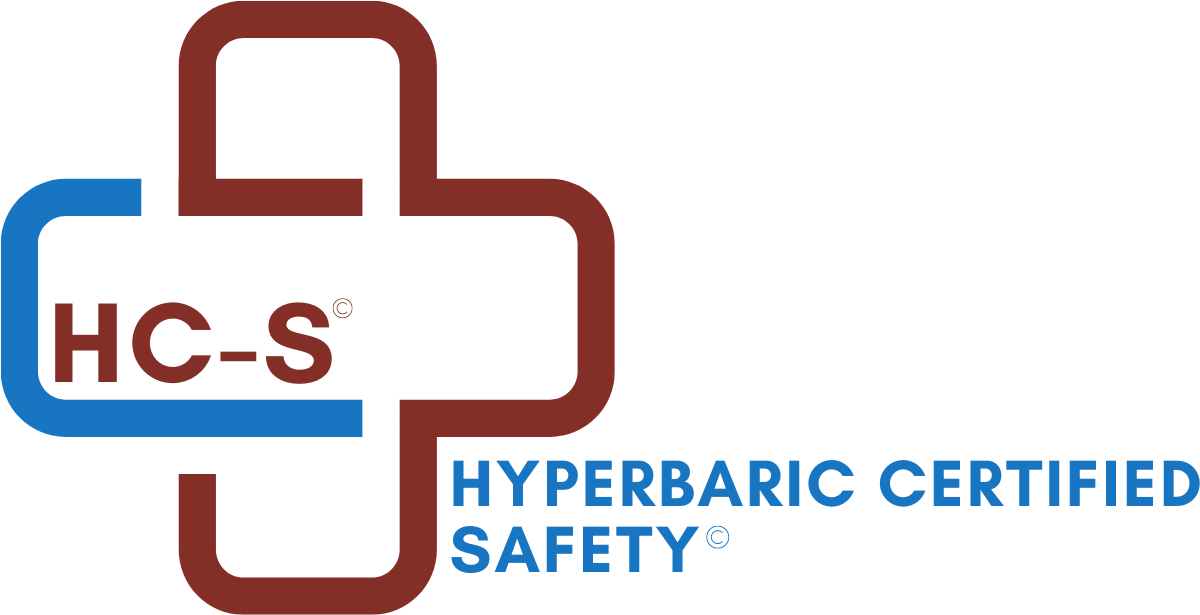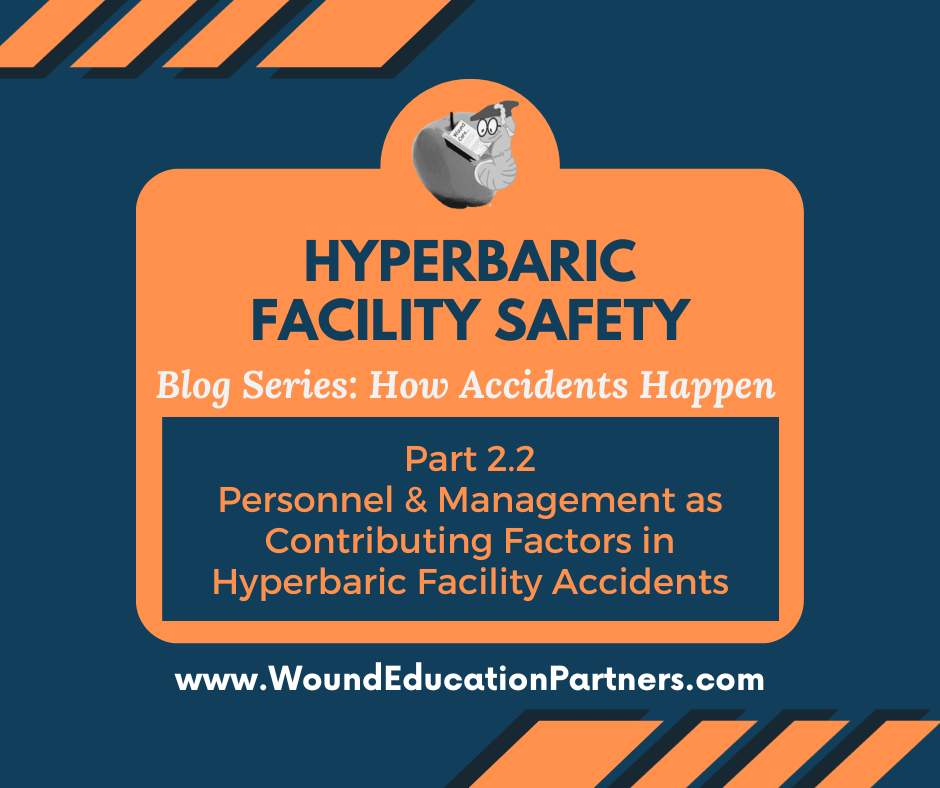Rx Pad
Part 2.2: Personnel & Management as Contributing Factors in Hyperbaric Facility Accidents (continued)
In this installment of How Accidents Happen we continue looking at personnel & management as contributing factors in hyperbaric facility accidents.
Disabled or Unused Safety Devices
Nearly everybody knows someone who doesn’t use seat belts when driving their car. Most such people have never been in an accident. Safety devices cost money and some- times get in the way. However, they always have a purpose. In the author’s case, the use of a seat belt once made the difference between disaster and an exciting ride when he was run off a road at 50 mph and had to dodge a series of obstacles. To be effec- tive, safety devices must be used, and that use often requires disciplined action. An atmosphere where the time and effort required to maintain and use safety devices is encouraged does not accidentally occur. It has to be nurtured by management.
Inadequate Training
Proper and sufficient training is one of the major contributors to a safe operation. Hyperbaric operations can appear deceptively simple. However, the consequences of a significant operational error can easily be disastrous. Keeping “cool” when things are going well is rarely difficult. When ugly surprises come along, a properly trained operator will have a much better chance of maintaining control. Training in this sense means having a fundamentally sound understanding of what is going on as well as sim- ple action-reaction training.
Inadequate Staffing/Management Pressure to Cut Costs
The pressures to cut costs and increase revenues that are typical of today’s health care envi- ronment can easily lead to many of the risk factors discussed in this chapter. What is safe and reasonable in any given situation is up to the judgment of the facility safety director and/or other persons in positions of responsibility. National Fire Protection Association, NFPA 99, Health Care Facilities Code, Chapter 14: Hyperbaric Facilities (section 14.3.1)1 and its subsection describe the role of facility safety director in such situations.
Overcrowding
Loading any machine beyond its design capacity is rarely a good idea. Yet reports of acci- dents involving overloaded vehicles are commonplace. Exceeding the design population of a chamber is no different. Most chambers are designed to support a maximum number of persons, and this number should not be exceeded. Exceeding the design population means people will be present in the chamber in places the system designers did not expect them to be. This can sometimes lead to surprising consequences as the case study pre- sented later in this chapter will illustrate. Exceeding the design population also creates air conditioning demands that the chamber air conditioning system may not be able to ade- quately support. Most chambers also have a fixed number of breathing devices for use by the chamber occupants in the event of a fouled atmosphere in the chamber. The number of occupants should never exceed the number of available breathing devices.
Failure to Respect Known Hazards
Apopularphrasethatisapplicablehereis,“Familiaritybreedscontempt.”Thisisparticularly true in clinical hyperbarics where chamber pressures are expressed in terms of atmospheres (ATA) or pounds per square inch (PSIG). A pressure expressed as 2 ATA or its psig equiva- lent, 14.7 PSIG, does not seem like a large number, especially when compared to the 3,000 PSIG pressures typical of self-contained underwater breathing apparatus (SCUBA) cylinders. However, the total force exerted over any significant area can be enormous and must be respected. The following “Volkswagen Rule” can be helpful in fostering an understanding of the magnitude of the total forces involved at normal therapeutic pressures:
14.7 pounds per square inch (1 atm) times an area of 144 square inches (1 sq. foot) = 2,116 pounds force
or more simply:
1 atm x 1 square foot > 1 ton force
The concept of 1 ton of force is sometimes hard to grasp, especially by non-technical personnel. In such cases, the following paraphrase is often helpful:
1 atm differential equates to a force equal to the weight of approximately 1 Volkswagen Beetle per square foot.
The total area of a 30-inch diameter door is 4.91 square feet (706 square inches). Consequently, the effect of releasing the latches on an outward opening door with a pressure of only 1 PSIG still in the chamber is the same as releasing the latches on the door with an angry giant on the other side trying to throw the door open with a force of over 700 pounds. A sudden “loss of pressure” of 1 PSIG is rarely a risk for a person inside a chamber. However, a suddenly accelerating door can do a fine job of flinging a careless outside operator a considerable distance. The resulting landing is never graceful and nearly always painful.
Doors that open with pressure are required by most pressure vessel codes to be fitted with interlocks that prevent the following:
- the vessel from being pressurized unless the door latches are fully engaged
- the door latches from being released prior to the complete release of pressure from the vessel
The hardware required to implement the above two interlock requirements may be different for each of the two cases. The presence of such interlocks is of significant importance, and they need to be well maintained.
Contraband Smuggled by Patients
In recent years, this factor has been the leading cause of chamber fires and is the pri- mary cause in at least six known fatal chamber fires. Usually, the “contraband” has been a pocket warmer, such as the conventional type (butane lighter inside a metal cage) or a more recent implementation (sealed pouch filled with iron filings). When the pouch is opened to allow oxygen and moisture to reach the iron, heat is produced as a result of oxidation of the iron. Both types, when taken into an oxygen-enriched atmosphere, can quickly produce sufficient heat to start the pocket they are residing in on fire. Another fatal fire was caused by a toy pistol with a spark-generating flint. The pistol was carried into a chamber by a small boy who later ignored pleas from the outside operators not to use it. Yet another was caused by a diver who was taken into a chamber unconscious from decompression sickness. The diver woke up at depth and decided he needed to light a cigarette that he still had in a pocket.
Chamber operators must explain the “do’s and don’ts” of what can be safely carried into a chamber to all personnel. However, even with that, some form of confirmation is warranted. Some facilities require the wearing of chamber clothes that are nearly 100% cotton and pocketless. There are additional safety measures that can be put in place by the facility staff to enhance the safety of overall care, such as metal detectors, patient searches, etc.
Incapacitated or Absent Operators
The risk of an incapacitated chamber operator is a hazard that is always present but rarely happens. However, chamber operations should always be designed in such a way that there are other personnel immediately available who could take over should an operator become incapacitated.
More real is the risk of an operator that is distracted or absent from the room. Mod- ern chambers can maintain pressure nicely for long periods of time without operator attention. Operators can sometimes develop a strong need to make a visit to the local bathroom. Procedures and personnel need to be in place for such situations and other events that may require the primary chamber operator to leave the room while the chamber is in use.
Excerpted with permission from the publisher. Source Reference Hyperbaric Facility Safety: A Practical Guide, Second Edition
Learn More About Hyperbaric Facility Safety with our 16-hour CEU Course! Find more details here.
When you subscribe to the blog, we will send you an e-mail when there are new updates on the site so you wouldn't miss them.



Comments